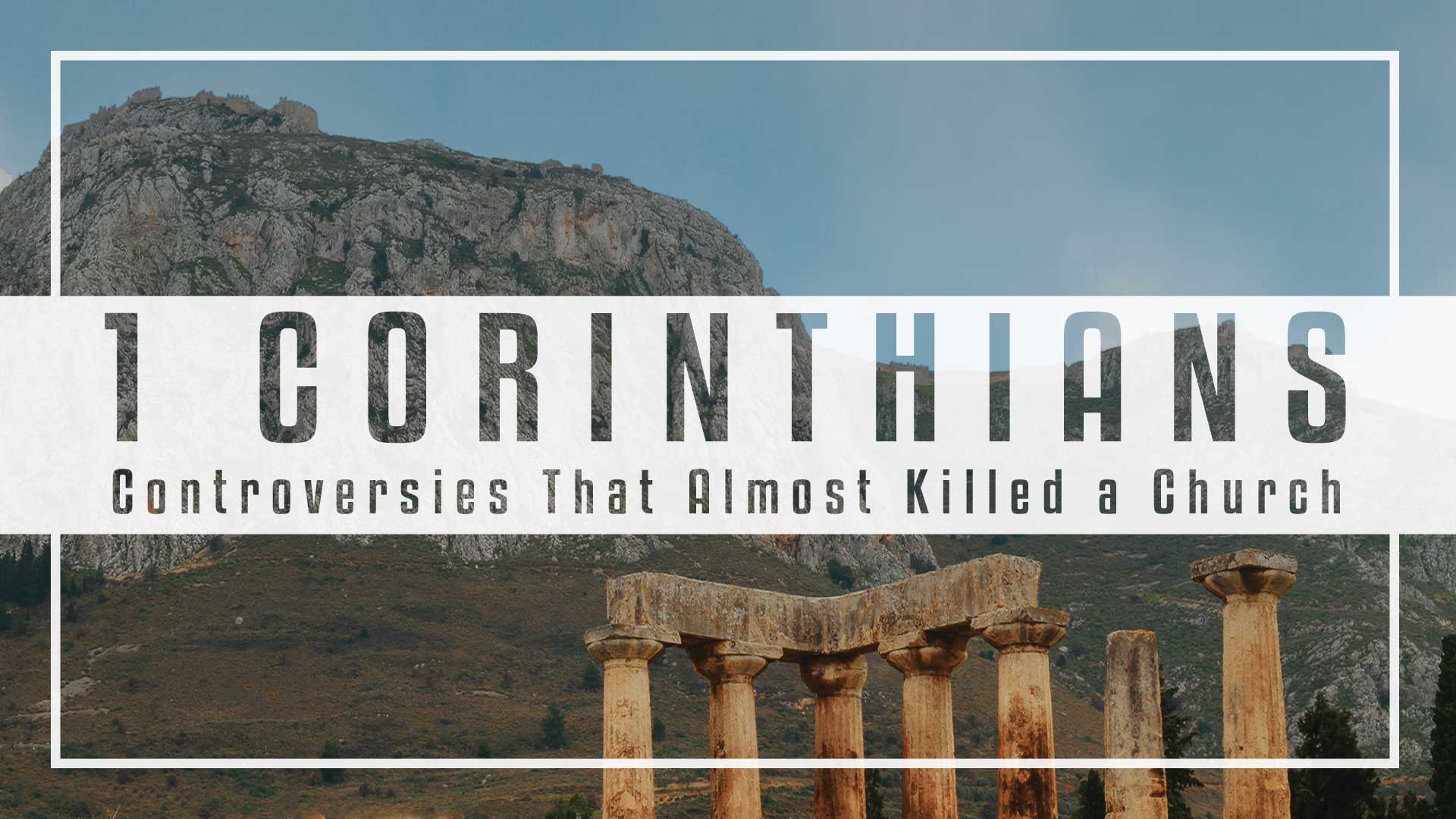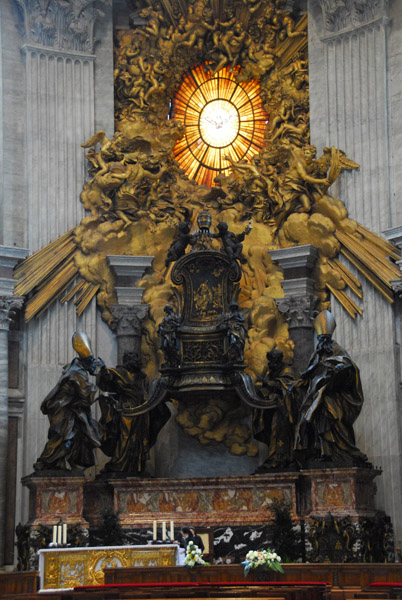In the aftermath of Judas’ betrayal, Jesus explains what true discipleship looks like, and what he has to do first in order to make it possible. We can share the light of Christ during the dark Coronavirus crisis, too.
Posts

Once again, this Sunday’s second reading is from 1 Corinthians, and once again it’s from chapter 1 (vv. 10-13, 17). There were real divisions in the congregation that were very worrying to St Paul. Peter Kreeft once noted that Paul was horrified by the beginnings of a sort of “Protestantism” in Corinth. It isn’t a bad analogy at all – many early Protestant movements came to be identified with the particular individual who founded it – Lutheranism (Martin Luther) and Calvinism (John Calvin) are two examples that immediately spring to mind.
In Corinth in the first century, members of the Church were aligning themselves behind various leaders, too. They weren’t leaving the Church per se in order to do that, but these actions still had a very divisive effect. Catholics were forming various “camps” based on which leader they preferred, whether that was Paul, Apollos (a very eloquent preacher in the early Church who had spent some time in Corinth – for more on him see Acts 18:24-28), or Cephas (the Apostle Peter – “Cephas” is “Peter” in Aramaic). Some seemed to reject any merely human leadership, claiming to belong solely to Jesus Christ, without need of any Church intermediaries.
Some representatives of a “parishioner” in Corinth (“Chloe’s people”) had gotten word about this state of affairs to Paul, who at the time was in Ephesus. He was incredulous and extremely disappointed. He thunders, “Is Christ divided? Was Paul crucified for you? Or were you baptized in the name of Paul?” He urges them in the strongest words possible (“in the name of our Lord Jesus Christ”) “that all of you agree in what you say, and that there be no divisions among you, but that you be united in the same mind and in the same purpose.” Christ must be the centre, and human leaders are only useful inasmuch as they point people not to themselves, but to Jesus.
How can we apply Paul’s warning to us today?
Today, just as in the first century, Catholics are just as tempted to create “cults of personality” centred around human leaders, whether they be bishops, priests, professed religious, or laypeople. There are also people who foolishly believe that they can have full access to Jesus without the Church. How do we deal with such problems? I would suggest two remedies – one for all of us, and one for those in leadership.
First, for all Catholics – we must recognize that the basis of our belief is the one Person of Christ. This is what unites us: “one Lord, one faith, one baptism”, as Paul writes elsewhere (Ephesians 4:3-5). Secondly, leaders must purify their intentions. Why do we do what we do? Is our intention solely to give glory to God, or to ourselves? Humans are always a “mixed bag” of motives to some extent, but our neither our motives nor our message should revolve around ourselves. Paul himself sets the example, as he notes in today’s reading: Christ sent him to “preach the gospel, and not with the wisdom of human eloquence, so that the cross of Christ might not be emptied of its meaning.”

Q. This Sunday’s Gospel is taken from John 21. Does this chapter have any implications for the papacy?
A. Other texts, like Matthew 16, are often cited in this regard, but John 21 has one of the strongest proofs for the ongoing role of the office of Peter in the universal Church. Even non-Catholic scholars recognize this.
Q. Does the miraculous catch of fish in this chapter have anything to do with the Petrine office?
A. Fishing, of course, wasn’t just the former trade of the apostles; it represents their evangelistic mission of being “fishers of men”. The unbroken net conveys the unity of the one Catholic (universal) Church. Elsewhere, when Jesus provides a miraculous draught of fish, the nets begin to break from the strain; here, the nets are intact. Peter, dragging the net ashore, evokes his leadership in bringing the Church safely home to Christ, even to the shores of Heaven itself.
Interestingly, although the catch was so big that the disciples struggled to bring the nets aboard, almost sinking their boat, Peter now easily drags the net ashore all by himself. The Greek verb in the original text that is used to describe Peter’s dragging of the net is the same one used by Jesus in John 12:32. This is where Jesus says that, as he is lifted up from the earth, he will draw all people to himself.
Q. Why does the text mention specifically that 153 fish were caught?
A. By far, the most puzzling aspect of the passage is the reference to the 153 fish. First of all, this is an authentic eyewitness detail. On a secondary level, many commentators have proffered various theories to explain what this number might symbolize (John’s Gospel functions on “two levels” – there is often a secondary, “heavenly” meaning to earthly events). Most of these interpretations suggest the idea of the universality or completeness of the catch.
So, to sum up: we have Peter, alone, dragging the unbroken net of a universal catch to the shores of heaven. This is clearly a reference to his position as leader of the Church on earth.
When you add to all of this the threefold charge of Jesus to Peter (“Feed my Sheep”) that immediately follows, the picture is complete. Peter is singularly (in the original Greek text) given this responsibility to shepherd the universal Church. Keep in mind also that this event is recounted in the same Gospel in which Jesus describes himself as the “Good Shepherd” (John 10). Before his Ascension, Jesus here reaffirms Peter’s unique leadership position, passing the earthly reins of the Church to him.
 Today is the feast of the Chair of Peter, celebrating the enduring office of the Papacy that Jesus entrusted to the Church in Matthew 16, John 21, and elsewhere. Non-Catholics often question the Church’s interpretation of these Scriptures, but there’s no denying the reality of papal primacy in how the early Church actually operated in history. The praxis of the early Church from the beginning is eloquent testimony that the Catholic interpretation of the Petrine ministry is the original one.
Today is the feast of the Chair of Peter, celebrating the enduring office of the Papacy that Jesus entrusted to the Church in Matthew 16, John 21, and elsewhere. Non-Catholics often question the Church’s interpretation of these Scriptures, but there’s no denying the reality of papal primacy in how the early Church actually operated in history. The praxis of the early Church from the beginning is eloquent testimony that the Catholic interpretation of the Petrine ministry is the original one.
A great example of this is an incident that arose during the reign of Pope Victor I, circa 198 AD. Some bishops in the Eastern wing of the Catholic Church had been celebrating Easter on a different date than what had been the norm in the West. Pope Victor threatened to excommunicate these prelates from Asia Minor, unless they fell back in line with the Roman celebration of Easter.
Some questioned aspects of Pope Victor’s decision – the great Saint Irenaeus, author of the apologetic masterwork, Against Heresies, for one. But no one questioned his authority to do such a thing – not even the Eastern bishops themselves. The fact that they didn’t is damaging to the non-Catholic view that the Church’s bishops have no leader among themselves. Just as surely as Peter was the captain of the Apostolic band, his successor, the Pope, has always been the leader of his fellow bishops.
As Irenaeus himself so eloquently put it,
Since, however, it would be very tedious in such a volume as this, to reckon up the successions (the apostolic succession of bishops) of all the Churches, we do put to confusion all those who, in whatever manner, whether by an evil self-pleasing, by vainglory, or by blindness and perverse opinion, assemble in unauthorized meetings; (we do this) by indicating that tradition derived from the apostles, of the very great, the very ancient, and universally known Church founded and organized at Rome by the two most glorious apostles, Peter and Paul; as also (by indicating) the faith preached to men, which comes down to our time by means of the successions of the bishops.
For it is a matter of necessity that every Church should agree with this Church (Rome) on account of its preeminent authority, that is, the faithful everywhere…
– Against Heresies, 3, 3, 2

